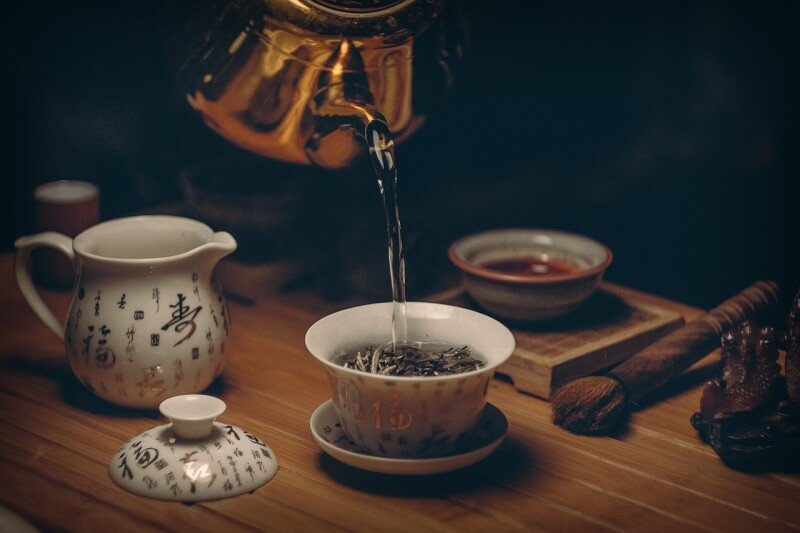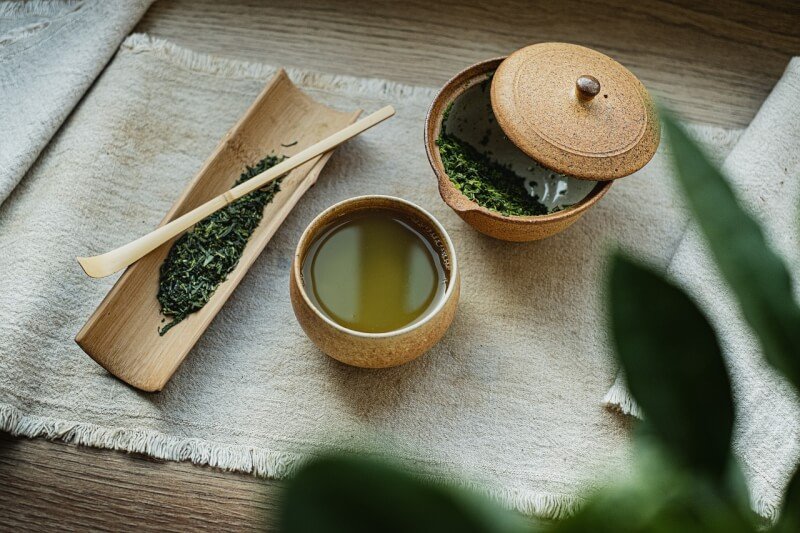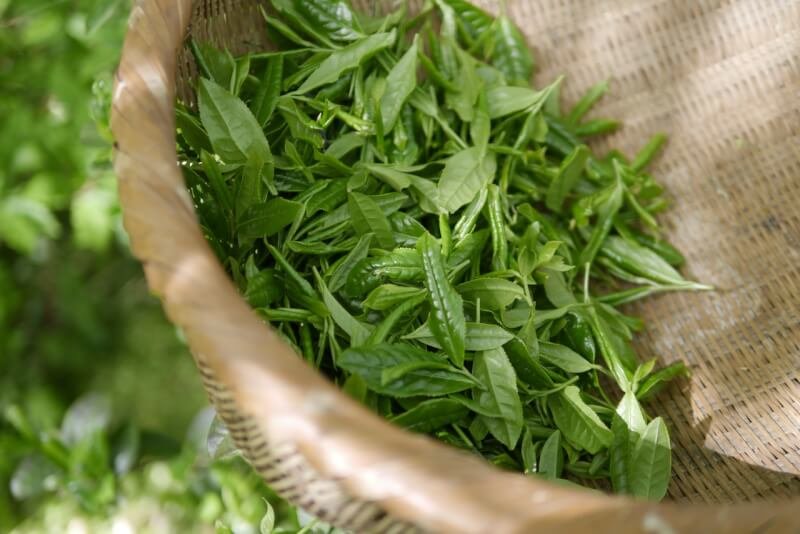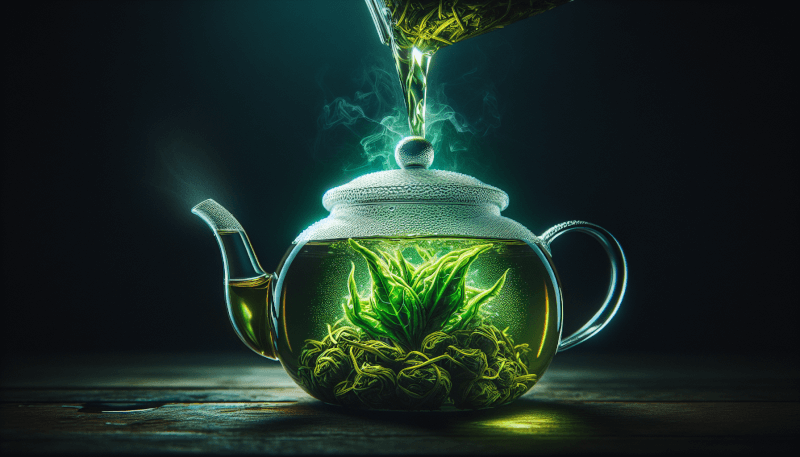Ah, green tea, the elixir of health and vitality. If you’re looking to unlock its maximum benefits, it all begins with the perfect brew. With its abundance of antioxidants and numerous health-boosting properties, green tea has gained immense popularity over the years. But how exactly do you brew it to extract its full potential? In this article, you’ll discover the best methods to prepare your green tea, ensuring that every cup you sip is a delightful and wholesome experience for your body and mind. So grab your teapot and get ready to embrace the goodness of this ancient beverage.

Choosing the Right Green Tea Leaves
When it comes to enjoying a soothing cup of green tea, opting for loose leaves instead of tea bags is the way to go. While tea bags may be more convenient, loose leaves offer a fresher and more flavorful experience. With loose leaves, the full essence of the green tea is preserved, allowing you to fully appreciate its aroma and taste.
In addition to choosing loose leaves, it is important to look for high-quality green tea leaves. The quality of the leaves greatly affects the overall taste and health benefits of the tea. Look for leaves that are bright green in color, as this indicates freshness. Avoid leaves that appear dull or have a yellowish hue. The leaves should also have a delicate, slightly grassy aroma.
Consider exploring different types of green tea leaves as well. There are various varieties to choose from, each with its own unique flavor profile. Some popular types include sencha, matcha, and jasmine green tea. By trying different types, you can discover which one you enjoy the most and tailor your brewing methods accordingly.
Water Temperature and Brewing Time
To achieve the perfect cup of green tea, it is crucial to use water at the right temperature. Green tea should not be brewed with boiling water as it can result in a bitter flavor. Instead, the water temperature should be around 175°F (80°C) to 180°F (82°C). This temperature range allows the tea leaves to release their flavors without becoming overly bitter.
In addition to water temperature, the brewing time is equally important. Steeping green tea for the appropriate duration ensures that you don’t end up with a weak or overly strong cup. Generally, green tea should be steeped for 2 to 3 minutes. However, depending on the type of green tea and personal preference, the brewing time can vary. It is recommended to experiment with different brewing times to find the perfect balance for your taste buds.

Preparation Methods
There are several preparation methods for brewing green tea, each originating from different cultures and offering unique characteristics. The basic brewing method involves adding loose leaves to a teapot or mug, pouring hot water over the leaves, and letting it steep for the desired time.
The Japanese brewing method, known as Senchado, involves using a small teapot and multiple short steepings to extract the best flavors from the leaves. This method allows for a more delicate and nuanced cup of tea.
The Chinese brewing method, often referred to as Gongfu Cha, focuses on the art of tea preparation. It involves using a small teapot or gaiwan, and steeping the leaves multiple times for short durations. This method emphasizes the full expression of the tea’s flavor and aroma.
By familiarizing yourself with different preparation methods, you can experiment and discover which method brings out the best qualities of the green tea you are brewing.
Using Filtered Water
While the quality of green tea leaves is important, the quality of the water you use can also greatly impact your tea-drinking experience. Understanding the importance of water quality is crucial in achieving the best results.
Tap water often contains impurities that can affect the taste of the tea. Filtering tap water can remove these impurities and provide a cleaner base for brewing green tea. Using filtered water ensures that you are starting with the best possible foundation for your tea, allowing the flavors to shine through without any interference.
Investing in a water filter or using bottled spring water can greatly enhance the overall taste and enjoyment of your green tea.

The Ideal Tea-to-Water Ratio
Getting the tea-to-water ratio right is essential for brewing the perfect cup of green tea. Determining the right amount of tea leaves to use can be subjective and dependent on personal preference. However, a general guideline is to use approximately 1 to 2 teaspoons of loose leaves per cup of water.
Calculating the appropriate water volume can also make a significant difference. It’s important not to dilute the tea too much or overwhelm it with too little water. A good rule of thumb is to use 8 ounces of water per teaspoon of tea leaves. Adjust the amount of water based on the strength and intensity of the brew you desire.
Finding the optimal tea-to-water ratio may take some trial and error, but once you find the perfect balance, you will be able to consistently brew a satisfying cup of green tea.
Avoiding Oversteeping
Oversteeping green tea can result in a bitter and unpleasant taste. It’s important to be mindful of the steeping time and avoid leaving the leaves in hot water for too long. Oversteeping can also extract excessive amounts of caffeine, which may lead to jitteriness or restlessness.
To prevent oversteeping, keep a close eye on the brewing time. Steep the tea for the recommended duration mentioned earlier, but feel free to adjust it to suit your taste preferences. If you prefer a milder cup, consider reducing the steeping time slightly. By paying attention to the brewing process, you can ensure that each sip of your green tea is smooth and well-balanced.

Adding Lemon or Honey
Incorporating lemon into your green tea can provide a refreshing twist and additional health benefits. Lemon is rich in vitamin C and antioxidants, which can enhance the overall antioxidant properties of green tea. Squeezing a fresh lemon slice into your cup of green tea is a simple and delicious way to boost the flavors and potential health benefits.
Honey can also be a natural sweetener for your green tea. While green tea itself has a slightly bitter taste, adding honey can balance it out and provide a touch of sweetness. Honey is also known for its antibacterial properties and can bring additional health benefits to your cup of tea. Experiment with different types of honey to find the one that complements the flavors of green tea the best.
Remember, moderation is key when adding lemon or honey to your green tea. Start with a small amount and adjust to your taste preferences. This way, you can enjoy the benefits without overpowering the delicate flavors of the tea itself.
Experimenting with Infusions
Green tea is a versatile beverage that lends itself well to experimentation. One way to add variety to your tea-drinking experience is by incorporating different ingredients and flavors into your brew.
Infusing your green tea with fruits, such as berries or citrus slices, can provide a burst of freshness and add natural sweetness. You can also experiment with herbs like mint or chamomile to create unique flavor combinations. Feel free to explore spices like cinnamon or ginger for an added kick of warmth and complexity.
By getting creative with your green tea infusions, you can discover new flavor profiles and tailor your tea to suit your mood and preferences.

Enjoying Green Tea at the Right Time
While green tea can be enjoyed any time of the day, there are specific times when consuming it can yield maximum benefits. Drinking green tea in the morning can provide a gentle energy boost to start your day. Its natural caffeine content can help improve focus and alertness without causing the jitters often associated with coffee.
Green tea is also a great beverage to enjoy after meals. It can aid digestion and help prevent bloating. Additionally, its high antioxidant content can support overall health and boost the immune system.
However, it is important to avoid consuming green tea too close to bedtime. Its caffeine content, although lower than coffee, can still interfere with sleep quality. To ensure a restful night’s sleep, it is recommended to enjoy your last cup of green tea at least 4 to 6 hours before bedtime.
Storing Green Tea Properly
To preserve the freshness and quality of your green tea leaves, it is crucial to store them properly. Exposure to heat, light, and moisture can negatively impact the tea, leading to a loss of flavor and aroma.
Optimal storage conditions for green tea include airtight containers that are kept in a cool, dark place. Avoid using transparent containers as they allow light to penetrate and degrade the tea leaves. Moisture can also be detrimental, so it is advisable to store tea away from humid environments like the kitchen.
By storing your green tea properly, you can ensure that each cup you brew is as flavorful and enjoyable as the first.


